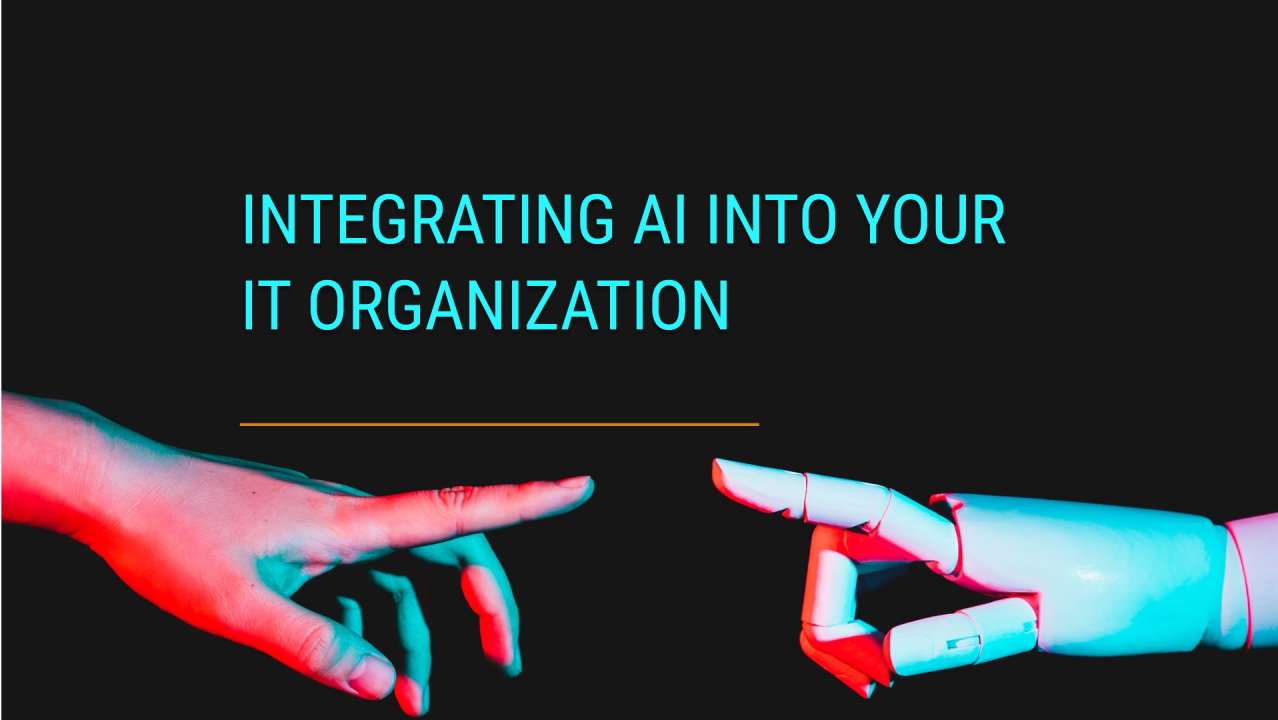
Bridging the Gap: Integrating Digital and AI within Traditional IT Organizations
Mark Sander
Information Technology Executive in regulated industries | Digital Strategist | Consultant | Board Member | CDIO | CIO | CDO | Pharmaceuticals | Biotech | Medical Device | Consumer Products | Healthcare | Manufacturing
Today’s technology landscape is evolving at an unprecedented pace and complexity. With increasing expectations from boards, investors, and C-Suite executives, technology leaders are under immense pressure to integrate digital transformation, emerging technologies and artificial intelligence (AI) into their core competencies and operations. This integration has become a necessity for the survival and growth of the company.
The pressing question is: how can organizations achieve this integration effectively?
A Chief Digital Information Officer (CDIO) or Chief Information Officer (CIO) might feel akin to the engineers depicted in the movie Apollo 13: tasked with transforming a box of disparate “stuff” into a cohesive solution to do something totally different while under tight constraints and high stakes. In today’s business context, the challenge is to implement these changes without significantly increasing staff or budgets while ensuring a high return on investment and flawless delivery from the start.
The good news is that success is achievable by focusing on a few key pillars:
1.?? Operational Integration
2.??? Project Governance
3.????Data Governance
4.????People
?
Operational Integration
The rise of digital transformation has reshaped how businesses operate. Technologies such as cloud computing, data analytics, and AI have revolutionized business processes, enabling organizations to enhance efficiency, improve customer experiences, and innovate rapidly. Traditional IT organizations who rely on legacy systems and processes will find themselves at a disadvantage if they fail to adapt.
It is crucial to recognize that these technologies are not isolated solutions that can be implemented by "Shadow IT" independent of the CIO’s organization; doing so can lead to operational failures. A secure and robust computing and communications environment is necessary for these new systems to function effectively and deliver value. Even with Software as a Service (SaaS) and outsourced service providers, these platforms need to be part of an integrated and fully supported ecosystem. This requires:
Project Governance
Despite the hype and potentially game-changing benefits, integrating digital technologies and AI into traditional IT organizations is fraught with challenges. The legacy team often clings to current solutions and may resist adopting new technologies, while business partners are eager to embrace every new tool they encounter. A technology executive must find a balance between these opposing views.
领英推荐
At the outset of any technology effort, business and technology leadership need to align and clearly articulate what is the problem we are trying to solve? How will success be measured against defined baseline metrics? What are the benefits and ROI? Too often a new technology or solution becomes the primary focus when the problem is not yet fully defined or understood. This leads to solutions that don’t get the job done, don’t meet business partner’s expectations, and lead to long-term mistrust.
The key to success lies in establishing a robust project governance structure—a collaborative space where business and IT can assess new ideas and technologies. A transparent and honest evaluation of proposed projects based on their robustness, cost, supportability, alignment with the organization’s computing strategy and environment, and expected ROI. ROIs can manifest in various forms: enabling new products or services (generating revenue), ensuring regulatory compliance, enhancing employee or customer safety, supporting other company strategic initiatives (i.e., building a new plant, distribution center, office or laboratory), avoiding future costs, or achieving genuine cost savings.
?
Data Governance
AI and machine learning require vast amounts of high-quality data for effective model training. Many organizations struggle with inadequate data in both quality and quantity. While some industries can purchase data from third parties (e.g., prescription or supply chain data), others must generate it internally. Often, the necessary internal systems to curate this data are overlooked, leading to costly failures.
Another challenge lies in data governance—how data is stored and protected, who can access it, who can modify it, and how to establish “one version of the truth.” Without a unified approach, different parts of the organization may reach conflicting conclusions, leading to disputes and poor decisions.
Cost is also a concern. Decentralized data governance can result in redundant data purchases and elevated storage expenses. Mapping major data stores across the organization can reveal multiple costly, out-of-sync copies of large datasets.
A simple Data Governance program can prevent all these issues.
?
People
An old adage states, “What got you here won’t get you there.” As technology evolves, so do the skills and experiences needed to manage it effectively. Your best employees can become ineffective if you don’t plan for these changes. Not every team member may adapt to new technologies, particularly in newer roles such as Data Architect and Data Scientist, where new expertise is essential. However, underestimating the value of historical knowledge and business processes held by existing staff can be detrimental.
Proactive planning is key to bridge the gap. Identify team members who can develop new skills through company-sponsored education or by leveraging consultants for implementation and knowledge transfer, ensuring a smooth transition.
?
Conclusion
Integrating digital and AI technologies into traditional IT organizations is not merely a challenge but an essential evolution in today’s business landscape. By focusing on operational integration, project governance, data governance, and the development of people, organizations can navigate this transformation successfully. Always start with a clear, measurable, and baseline definition of the problem. Embracing change and fostering a culture of collaboration will enable traditional IT organizations to not only survive but thrive in the digital age.
Chief Information Officer, Advisor, Board Member
2 周Spot on Mark!
Building Digital Futures & Transforming Lives: Your IT Staffing Partner
3 周Great article Mark Sander!